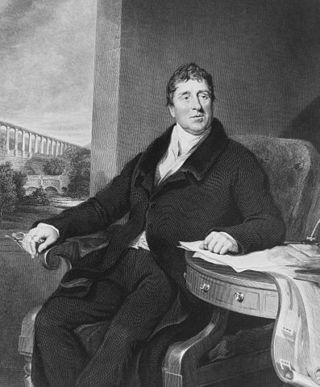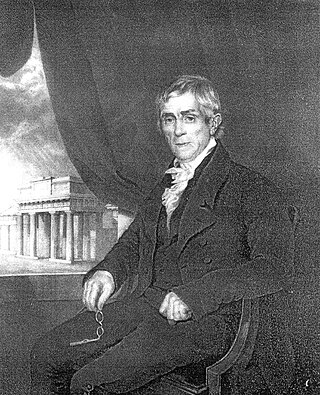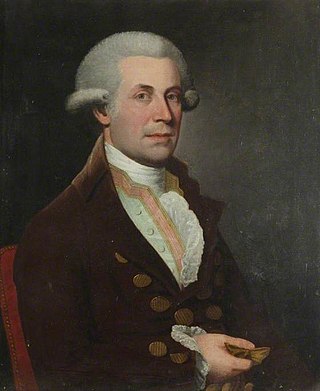This article needs additional citations for verification .(December 2009) |
| |||
|---|---|---|---|
| Buildings and structures +... |
The year 1795 in architecture involved some significant events.
This article needs additional citations for verification .(December 2009) |
| |||
|---|---|---|---|
| Buildings and structures +... |
The year 1795 in architecture involved some significant events.


Thomas Telford was a Scottish civil engineer. After establishing himself as an engineer of road and canal projects in Shropshire, he designed numerous infrastructure projects in his native Scotland, as well as harbours and tunnels. Such was his reputation as a prolific designer of highways and related bridges, he was dubbed the Colossus of Roads, and, reflecting his command of all types of civil engineering in the early 19th century, he was elected as the first president of the Institution of Civil Engineers, a post he held for 14 years until his death.

John Nash was one of the foremost British architects of the Georgian and Regency eras, during which he was responsible for the design, in the neoclassical and picturesque styles, of many important areas of London. His designs were financed by the Prince Regent and by the era's most successful property developer, James Burton. Nash also collaborated extensively with Burton's son, Decimus Burton.

Inigo Jones was an English architect who was first significant architect in England in the early modern era and the first to employ Vitruvian rules of proportion and symmetry in his buildings. As the most notable architect in England, Jones was the first person to introduce the classical architecture of Rome and the Italian Renaissance to Britain. He left his mark on London by his design of single buildings, such as the Queen's House which is the first building in England designed in a pure classical style, and the Banqueting House, Whitehall, as well as the layout for Covent Garden square which became a model for future developments in the West End. He made major contributions to stage design by his work as a theatrical designer for several dozen masques, most by royal command and many in collaboration with Ben Jonson.
The year 1880 in architecture involved some significant architectural events and new buildings.
The year 1877 in architecture involved some significant events.
The year 1900 in architecture involved some significant events.
The year 1860 in architecture involved some significant architectural events and new buildings.
The year 1814 in architecture involved some significant events.
The year 1848 in architecture involved some significant events.
The year 1832 in architecture involved some significant architectural events and new buildings.
The year 1817 in architecture involved some significant events.
The year 1799 in architecture involved some significant events.

Thomas Harrison was an English architect and bridge engineer who trained in Rome, where he studied classical architecture. Returning to England, he won the competition in 1782 for the design of Skerton Bridge in Lancaster. After moving to Lancaster he worked on local buildings, received commissions for further bridges, and designed country houses in Scotland. In 1786 Harrison was asked to design new buildings within the grounds of Lancaster and Chester castles, projects that occupied him, together with other works, until 1815. On both sites he created accommodation for prisoners, law courts, and a shire hall, while working on various other public buildings, gentlemen's clubs, churches, houses, and monuments elsewhere. His final major commission was for the design of Grosvenor Bridge in Chester.
The year 1729 in architecture involved some significant events.
The year 1831 in architecture involved some significant events.
The year 1829 in architecture involved some significant events.
The year 1810 in architecture involved some significant architectural events and new buildings.

Richard Lane was an English architect of the early and mid-19th century. Born in London and based in Manchester, he was known mainly for his restrained and austere Greek-inspired classicism. He also designed a few buildings – mainly churches – in the Gothic style. He planned and designed many of the houses in the exclusive Victoria Park estate.

Thomas Farnolls Pritchard was an English architect and interior decorator who is best remembered for his design of the first cast-iron bridge in the world.